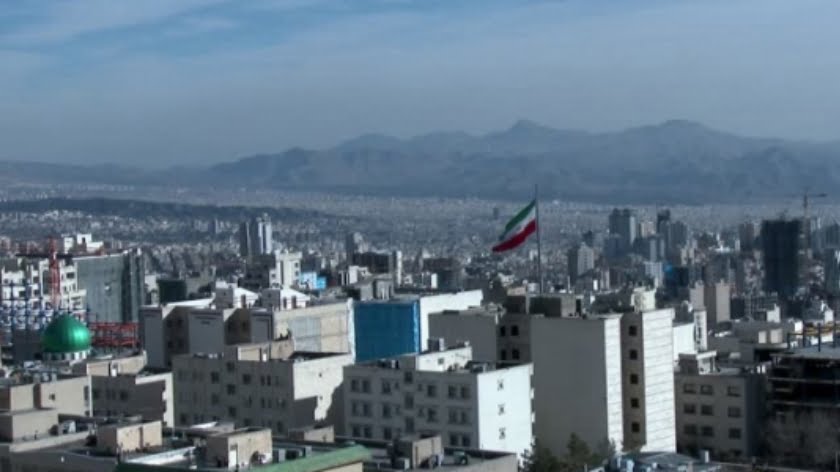This Is How the U.S. Plans to Cripple Iran’s Economy
With sanctions re-imposed on Iran’s oil exports last year and recently applied in part to its petrochemicals exports as well, the U.S. is now looking to roll out the next phase of its sanctions plan against the Islamic Republic. This is to gradually employ increasingly tight sanctions on Iran’s gas sector, whilst ensuring that Europe’s mechanism for enabling ongoing business with Iran does not succeed. These policies taken together are aimed at limiting Iran’s energy export revenues to no more than US$14 billion per year, a senior energy source who works closely with Iran’s Petroleum Ministry told OilPrice.com last week. “This is the level of revenue targeted by the U.S. as being required to catalyse a popular uprising to remove the current regime in Tehran but not to cause an outright humanitarian disaster,” he added.
As it stands, Iran’s finances are understandably deteriorating fast. With around 40 percent of Iran’s budget revenues coming from oil exports – far less than the 80-90 percent of many of its neighbouring oil states but still substantial – this year’s budget looks increasingly fragile. It is founded on the twin assumptions of exporting a volume of around 1.54 million barrels per day (mbpd) of crude oil and gas condensate at a price of US$54.1 per barrel (pb). Both of these now look impossible to realise. With the extremely rigorous approach of the U.S. to enforce its sanctions of oil exports, Iran’s oil exports fell to around 400,000 bpd in May, less than half of April’s level and down from around 2.5 mbpd in April last year, according to tanker data and industry sources.
Similarly bleak is the real rate at which Iran is actually selling much of this oil. Although Tehran recently concluded a quiet deal with Iraq to sell some of its oil via Iraq export routes and rebranded as Iraq oil, while elsewhere Iran has to offer its oil at heavy discounts. This discount is currently running at a 22-25% reduction off Iran’s official selling price (OSP) minus the difference between ‘cost, insurance, and freight’ cargoes offered for ‘free on board’ pricing, according to the Iran source. “This is especially true of the China-bound shipments, as they are so crucial for Iran’s economy, which are now being sold effectively for around US$30 per barrel,” he added.
Before the U.S. oil sanctions began in earnest in the second half of last year – and were bolstered with the removal of waivers in April – Iran’s budget was predicated on at least US$30 billion from oil and gas condensate export. From this, about US$24 billion was earmarked for the government’s operating budget (including ongoing National Iranian Oil Company projects), with the remainder to go on deposit in the National Development Fund (Iran’s state savings vehicle). The government operating budget covers such everyday necessities as salaries for its near-five million employees, pension payments, and corollary benefit payments, among others. Given the current export revenues shortfall, the salaries of this cornerstone group in Iran’s society are not sustainable. Related: How To Buy Gold For $3 An Ounce
“Aside from the money going to the IRGC [Islamic Revolutionary Guard Corps] nobody else’s income is secure either, and that is what the U.S. sees as the match in the fireworks box,” the Iran source told OilPrice.com. “The U.S. does not want there to be a humanitarian disaster in Iran, which looks bad on TV, so the figure of US$14 billion per year in energy revenues for Iran has been agreed as allowable, and this will include some petchems and some gas, but the U.S. will tightly sanction those as well,” he added.
As exclusively reported by OilPrice.com recently, the U.S. has been relatively lax in enforcing the existing sanctions that it can use against Iran’s petchems sector but this appears to be changing. Within the last few days, the U.S. Treasury prohibited companies from doing any business with Iran’s largest petrochemical group, Persian Gulf Petrochemical Industries Company, citing its ties to the IRGC, together with a further 39 subsidiary companies and foreign-based sales agents. The Treasury added that it intended to ‘vigorously enforce’ the new petrochemical sanctions.
Sanctioning Iran’s gas exports is next on the U.S. list, but may be delayed, given the more serious negative ramifications for the U.S.’s increasingly fractious relationship with the European Union states, particularly Germany. “The genesis of the ongoing distrust that Germany has of the U.S. dates back to the revelations by former U.S. intelligence operative, Edward Snowden, that the NSA [U.S.’s National security Agency] was spying on European leaders, including [German Chancellor, Angela] Merkel,” Sam Barden, chief executive officer of global energy consultancy, SBI Markets, in Melbourne, told OilPrice.com. “For Merkel, this was an especially sensitive issue, given that she had grown up in East Germany where the Stasi spied on everyone, including her family,” he added.
The EU would further object to the sanctioning of Iran’s gas exports as it comes at a time when the U.S. is being seen as interfering with the EU’s plans to secure cheaper gas – than the U.S. can currently produce – into the future from Russia. This disagreement is presently focussed on the ‘Nord Stream 2’ 1,225-kilometre pipeline project to ship gas from Russia under the Baltic Sea to Germany that would double the capacity of the existing Nord Stream pipeline. Only last week, U.S. President Donald Trump said that he was considering sanctions on the project – which the U.S. has told European companies to avoid – and warned Germany against being dependent on Russia for the fuel. For its part, Germany maintains that the full-cost based breakeven price of U.S. liquefied natural gas (LNG) supplies to Europe stands now at no more than US$6 to US$7.50 per million British thermal units (Btu), compared with US$3.50 to US$4.00 for Russia’s pipeline gas based on Gazprom’s current taxation.
Around this has bubbled up U.S. objections to many EU states not meeting the agreed 2% of GDP annual spending on their commitments to NATO and being naive in co-operating with Russia, and EU objections to the U.S. looking to bully Europe into following a more expensive and less flexible gas fuel option (it is not as easy – or cost-effective – to just vary LNG supplies on a whim as it is to do so with pipelined gas) and abiding by the sanctions on Iran that, as far as the EU is concerned, were re-imposed without real reason. It would also mean that the U.S. had broken its promise to Germany – as the de facto leader of the EU – that in return for the EU going along with the U.S. sanctions on Iran oil, the U.S. would never sanction Iranian gas, which the EU absolutely needs, given recent long-term breaks in the supply chain. Related: OPEC Agrees To Schedule Meeting On July 1-2
Underpinning all of this on the U.S. side it the absolutely necessity of ensuring that no sudden windfalls of cash make their way to Iran so allowing it more breathing space. This is why a supposedly secret letter from the U.S. Under Secretary of Treasury for Terrorism and Financial Intelligence, Sigal Mandelker, found its way recently into the public domain. The widely reprinted letter makes it clear that the Instrument in Support of Trade Exchanges (INSTEX) financial mechanism created by the EU in January to allow for ongoing trade with Iran may well be sanctioned by the U.S., as well as individual companies and countries that use it, including ‘loss of access to the U.S. financial system.’
There are fears on the U.S.’s part that some of the many tens of billions owed to Iran for past oil sales by China and other Asian states may make their way back to Iran through European channels, and these fears are, in fact, well-founded. “For a long time, Turkey’s Halkbank and Germany’s Europäisch-Iranische Handelsbank were two of the major global mechanisms for money for oil sales to get funnelled back to Iran and Germany made it clear again earlier this year to Iran that Commerzbank and Austria’s Oberbank would also be factored into the system to enable payments to be made in the future,” the Iran source told OilPrice.com. “The one big problem in putting all of this into practice is that Iran still refuses to sign up to the FATF [U.S. backed ‘Financial Action Task Force’] recommendations [for combating money laundering and terrorist financing] and Germany and Europe simply will not go ahead in the current U.S. monitoring environment without that,” he added.
The ultimate fall-back position for the U.S. – actual military intervention against Iran – remains an option, said the Iran source who added that: “The U.S. is at 90% operational readiness for full military action if necessary.” Any real or false flag action – along similar lines to the recent incidents involving oil tankers in and around the Persian Gulf – would suffice as catalysts to engage militarily but the preferred option, said the source, remains a “war of attrition” against Iran. “If the U.S. cuts all energy related revenues down to the US$14 billion cap then the Iranian people will have a big decision to make,” he concluded.
By Simon Watkins
Source: Oil Price






